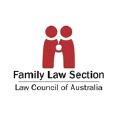
Resource Hub – Articles/Blog
Child Support Lawyers in Melbourne
Family breakdown is a very difficult time for a child, or children, and there are many issues that need to be considered to ensure that decisions are made in the child’s best interests. When parents separate, proper arrangements need to be made for the ongoing financial, physical and emotional support of their children. The obligations of parents to provide financial support of their children are governed by the Child Support Scheme.
Child Maintenance in Australia
Child Support means financial support for children under the Child Support (Assessment) Act. Based on the child support laws in Australia, child support usually takes the form of regular periodic payments, but it can also include lump sum payments. A lump sum payment may be made by way of the payment of specific expenses or the transfer of property.
Child Support payments are made by one parent to the other (or an eligible career) to help with the costs of a child. Child Support payments are separate from Centrelink or family assistance payments. However, Child Support payments can affect the amount paid by Centrelink and the Family Assistance Office.
Child Support can be arranged:
- by agreement between parents or
- through the Child Support Agency.
Child Support can be collected:
- privately or
- by the Child Support Agency.
Top Child Support Lawyers
The child support lawyers and parental rights lawyers at Mathews Family Law & Mediation Specialists Melbourne are experienced in dealing with a variety of Child Support and parenting cases. We can help to ensure proper arrangements are made for the ongoing financial, physical and emotional support of your child or children. We can assist you with dealing with the Child Support Agency, whether you are making an application for child support or are disputing a decision made by the Child Support Agency. We can also assist you in negotiating and finalizing a private agreement for Child Support.
If you are looking for a child support lawyer to assist with child support payments, connect with us at Mathews Family Law and Mediation Services.
IAFL Global Comparison of LGBT Laws
The International Academy of Family Lawyers, of which Vanessa Mathews is a Fellow, has published a global survey of Lesbian Gay Bisexual Transgender laws (LGBT laws), the results of which can be found here https://www.iafl.com/media/5336/2019-iafl-lgbt-survey.pdf.
The IAFL LGBT Committee stated ‘Laws affecting LGBT people vary greatly by country or jurisdiction. There are now 28 jurisdictions that accept same sex marriage, however gay sex remains illegal in many jurisdictions with the death penalty still applying in 14.
The International Academy of Family Lawyers (“IAFL”) supports all efforts towards full equality of the LGBT community throughout the world and the end to rules that unfairly discriminate against such individuals and, in many countries, criminalize countless couples because of the ones they love. There remains a lot of work to be done.
The work done by some fellows of the IAFL is having a real impact and changing for the better the lives of LGBT people. The LGBT Committee of the IAFL commissioned this survey to capitalize on the knowledge and expertise of some members for the benefit of the IAFL as a whole and the LGBT community.
The individual submissions in this survey are the work of fellows of the IAFL who have kindly donated their time and expertise to answer the same questions as set out below. Each of the contributor’s names and contact details are included.
The LGBT Committee intends that this should be a living resource. We are asking those who have already kindly donated their time to keep us informed as laws change in their jurisdictions. We have detailed submissions from 46 jurisdictions, however, there remains a good number of jurisdictions not covered where the IAFL has fellows. If your jurisdiction is not covered and you feel able to complete a survey, please get in touch with the IAFL.’
Congratulations to the IAFL LGBT committee members for preparing such a comprehensive review of comparative laws.
Child Support – The Basics
Child Support can be sought via the Child Support Agency or a Child Support Agreement. Legal and adoptive parents will be recognised as having parental responsibilities towards the child.
Parenting Orders. may be sought in the Local Court, the Federal Circuit Court or the Family Court. The principles that apply to the legal parents of children of marriages also apply to the legal parents of children of same sex couple relationships. A partial resolution to this issue is for the co-parents to apply to adopt the child, this step will entitle the co-parent to many of the rights of a legal parent.
What if I am unhappy with a decision made by the CSA?
It is possible to challenge a decision made by the CSA. There may be a right to internal review, an appeal to the Social Security Appeals Tribunal or to a court. Seek legal advice if you are considering challenging the CSA.
Child Support – The Details

As you and your spouse separate and divorce, child support will be one of the issues you will need to address. The primary purpose of child support is to guarantee that children’s day-to-day needs will be met through regular periodic support payments. Additionally, child support allows children to enjoy the same or similar standard of living as their parents. Child support lawyers can be arranged by agreement between the parents, or through an administrative assessment conducted by the Child Support Agency (CSA).
Child Support Agreements
Often the best way to arrange for child support is through an agreement between the parents in the form of a child support agreement. This method allows parties to deviate from the formula used in the administrative assessment used by the CSA to determine support. There are two types of agreements that may address child support: a binding child support agreement and a limited child support applications agreement.
Child support agreements are considered binding if both parties to the agreement were given independent legal advice (from separate counsel), and the agreement must state that this is in fact the case. Additionally, the counselor who administered the legal advice must also execute and sign a certificate, which is included in the agreement. A binding child support agreement can be for any amount – including an amount less than prescribed under the CSA formula.
Unlike a binding child support agreement, a limited child support agreement does not require that the parties obtain independent legal counsel. The only requirements for this type of arrangement are that the agreement is in writing, signed by both parties and that the amount agreed to is at least equal to the amount payable under the child support agency formula.
It is not possible to modify or alter a child support agreement; rather you must terminate the agreement and enter into a new one. The Child Support Assessment Act provides for several ways to terminate a child support agreement:
- by entering into a fresh agreement
- by agreement in writing
- a court order
- a new national assessment, and
- simply if the agreement is three or more years old.
Child Support Agency and Administrative Assessments
Should you and your former spouse be unable to reach an agreement and execute either a binding or limited child support agreement, you may arrange for child support through the CSA. In order to obtain this, you must first make a child support application for an administrative assessment. The assessment will be made using the appropriate formula and can be subject to private enforcement or registered for collection through the CSA.
Administrative assessments are calculated by using a formula that requires parents to share in the support of their children and is based upon the level of care provided as well as their respective incomes. The various applicable formulas take into consideration a child support income amount, adjusted taxable income, self-support amount, and relevant dependent child allowance, among other figures. There are six formulas available, although the most common is “formula 1.”
The steps to determine formula 1 are as follows:
- Calculate each parent’s daily child support income for the child
- Calculate the parents’ daily combined child support income for the child
- Calculate each parent’s daily income percentage for the child
- Calculate each parent’s daily percentage of care for the child
- Calculate each parent’s daily cost percentage for the child
- Calculate each parent’s daily child support percentage for the child
- Calculate the daily cost of the child
- If a parent has a positive child support percentage under step 6, the annual rate of daily child support payable by the parent for the child is calculated by using this formula:
Parent’s daily child support percentage for the day
X (multiplied by)
Costs of the child for the day
Formulas 2, 3, 4, 5, and 6 are less common. They are variations provided to consider non-parent careers, non-resident parents, multiple cases, and special circumstances or deceased parents.
Should any of the elements used in the formula change, the CSA should be notified so that the child support amount may be recalculated.
It is possible to be awarded an amount that is inconsistent with the administrative assessment of child support. If you are seeking a departure from the assessment you simply need to fill out a form and submit it to the CSA who will then schedule a conference to hear the parties. A written decision is ultimately provided to both parties. In determining whether a departure is proper, grounds for such must be established, it must be just and equitable, and it must be deemed otherwise proper, and there must be a special circumstance. The Child Support (Assessment) Act 1989 has enumerated ten types of special circumstances:
- Costs of caring for a child. It costs you more than 5% of your child support income amount to spend time with the children.
- Special needs of a child. It costs you extra to cover the children’s special needs.
- Manner expected by the parents. It costs you extra to care for, educate or train the children in the way that you and the other parent intended.
- Income and earning capacity of the child. The child support assessment does not take into account the income, earning capacity, property or financial resources of the children.
- Money, goods, or property from the payer for the benefit of the children. The children, the payee or someone else has received or will receive money, goods, or property from the payer for the benefit o the children.
- High costs of child care. You are the payee, you have sole care of the children, and it costs you more than 5% of your child support income amount for the child care for children younger than 12 years of age at the start of the child support period.
- Necessary expenses in self-support. You have necessary expenses in supporting yourself that affect your ability to support the children.
- Income, earning capacity, property or financial resources of one or both parents. The child support assessment does not take into account the income, earning capacity, property or financial resources of one or both parents.
- Legal duty to maintain another person or other children. You have a legal duty to maintain another person or other children not included in the child support assessment, and it costs you: more than 5% of your child support income to have contact with that person or those children, extra to cover the special needs of that person or those children, extra to cover the necessary expenses of that person or those children.
- Additional income. You have earned additional income for the benefit of resident children.
A child support assessment ends upon child support terminating event. Such an event can occur when the child turns 18, when the child is adopted, or when the child, career or liable parent dies among other events.
Alternative Payment Methods
While it is most common to receive child support in periodic payments, it is also permissible to receive it in a lump sum payment. The most common situations where lump sum orders are considered are where there are difficulties in the enforcement or where the liable parent is asset rich and income poor, although there are many other situations in which a lump sum could be awarded.
Another payment method that has been gaining in popularity is a combination of the periodic payment and lump sum concepts. This results when the liable parent deposits the sum to be held in trust and distributed as child support liabilities accrue.
Finally, a party does have a right to make objections regarding decisions made by the CSA. The objecting party must lodge the objection 28 days from the service of the decision, and a decision regarding the objection will be made within 60 days. Additionally, there is a formal process available to allow parties to appeal an objection decision.
Child Support Enforcement and Collection
1988 Changes
Australia has come a long way when it comes to child support enforcement. In 1988, less than 30% of child maintenance was paid, and in response, Australia passed the Child Support (Registration and Collection) Act. This required child support obligations to be registered, and thus become a debt to the Commonwealth. Prior to making this change, child support collection was a major issue for many Australians.

The legislation was passed in hopes of ensuring that children receive child support on a regular and timely basis. Fortunately, since the Act was passed non-payment issues have decreased significantly.
Registration
Child support, child maintenance, and spousal maintenance may all be registered for collection. Once registered, and the details entered into the child support register, the Child Support Agency (CSA) may enforce payment. When payment is not timely, the CSA reserves the right to impose penalties, which are retained by the CSA and not given to the payee.
This registration process is how the liability becomes a debt to the Commonwealth, and thus enforceable by the CSA. The CSA can enforce child support using the traditional court enforcement process.
Enforcement
A payee may enforce child support payments even if the debt has been registered for collection. As long as the payee notifies the Registrar in writing, 14 days before instituting the proceeding, the payee may sue and recover the debt due. A shorter notice period may be appropriate if there are exceptional circumstances.
Alternatively, the CSA may use the Federal Magistrates Court to enforce child support payments. Under these proceedings the court is not permitted to vary the child support liability or remit any penalties, the proceedings are strictly intended to be enforcement summons. The court is charged with the task of making an inquiry into the financial circumstances of the payer, and subsequently assessing his or her ability to pay the arrears.
Once the debt has been proved, the court may enforce the payment through a variety of methods, including garnishment, seizure of property, sequestration of the estate, sale of an interest in real property, or any other method necessary.
Collection Methods
The CSA has several methods it may use to enforce the collection of child support payments. They are as follows.
- Auto-withholding. Under this method, payments owed are deducted from the payer’s salary directly by the employer. Payers of child support may be averse to this sort of collection, as they would rather not share their child support liability with their employer, however it is considered an offense for an employer to discriminate based on such.
- Attachment of debts. The CSA has the authority to attach debts owed to the payer, including a tax refund. They may do this after first issuing a notice to the debtor (one owing to the payer money).
- Departure prohibition orders. Such orders prevent payers owing money from leaving the country.
In sum, there are several ways in which you can ensure any child support obligation due to your child will be paid. Thanks to the legislation passed in 1988, non-payment issues have been on the decline as it provides easy and effective ways to enforce and collect payments owed.
Determining Paternity and the Impact on Child Support
Child Support after Divorce
Under Australian family law, child support following a divorce is governed under the Child Support (Assessment) Act of 1989. Child Support Agency is the institution responsible for evaluating how much child support should be paid and also for collecting it from the parent. This agency falls under the control of the Department of Human Services. The Child Support Agency performs functions such as evaluation upon receiving an application from the parent who has custody of children. A specific formula is being used to determine the amount of child support that the other parent is liable to pay.
The formula takes into account a number of factors such as the annual income of both the parents, the age of the child and the costs that may be reasonably expected in taking care of the child. In order to arrive at a more equitable assessment, the formula also takes into consideration how much time the mother and father spends with the child. To further prevent overburdening either parent, the formula also considers whether the parent is already liable to pay child support as a result of an earlier divorce. The formula is also available on the website of the Child Support Agency and can be used by the parents independently.
In few special circumstances, however the law permits some deviation from the prescribed formula. One such situation might involve either parent incurring substantial expense in traveling over to spend time with the child. In cases where the actual financial resources of the parent differ from their declared income, the difference may also be taken into account to arrive at a fairer assessment.
In most cases, the child support payments are made to the Child Support Agency every month, from where they are then forwarded to the parent in custody of the child.
How much child support will I owe?
How much child support will I owe? Transcript

Hi. I’m Vanessa Mathews from Mathews Family Law & Mediation Specialists and I’m going to talk with you today about child support in Australia. While I can give you the basics about child support in Australia, I would stress that you contact a lawyer and get professional legal advice. Every family and every case is different.
Child support is the amount of money the non-custodial parent, meaning the parent the children don’t live with, must pay to the other parent in order to help support the children financially.
You and your partner may come up with your own child support agreement. If you do this, there are a few important pieces of information that your agreement should include. The agreement should say how much money one parent will pay to the other. The agreement should explain what the money is for, for example, generally, monthly payments are for food, clothing and housing.
But what about special expenses like private school fees or orthodontics? A good agreement should include who pays for those unexpected expenses or since you can’t always know what these will be, how you’ll decide who pays. You can agree that when an unexpected expense arises, you’ll go to a mediator, or a third party who knows you both well and let them decide how the new expense will be paid.
You should also include in the agreement how the monthly payments will be paid. Do you want to make a bank transfer? Cash or a check? And it’s also important to state when the payments will be made. At the end of each month, at the beginning of the next month. If you work out this arrangement ahead of time, you can avoid a lot of headaches and fights.
When deciding what needs to be paid for, you should also think about putting money away for your children for the future. This is especially important because once your child turns 18, the law doesn’t require you to support them anymore. Some parents continue to help out their adult children. While you may want to help them, your ex-partner may not want to and he or she does not have to do so. One way of ensuring that they’re not left out in the cold at that point is to include savings for them in the child support agreement.
I would add that there are different types of agreements you can make, so be sure to read the section on child support on our website at MathewsFamilyLaw.com.au.
Sometimes parents can’t come to an agreement on their own. In this case, the child support Melbourne agency will decide how much you need to pay. This is called the Child Support’s fee and it’s a mathematical equation that determines how much a parent must pay. The calculation is based on how much you earn, how many children you have, how much time you spend with them, whether or not you have children from another relationship, and how much you the parent need for yourself.
So, while a parent in one family may need to pay $500 a month for 2 children, another parent in another family may need to pay $1500 a month for 2 children. The Child Support agency’s responsible for assessing the amount a parent has to pay, collecting it, and distributing it to the other parent.
People often ask me what happens if a parent doesn’t pay. The law has a few ways of dealing with these parents. One is to garnish their wages. This means the money they owe for child support is taken directly out of the parent’s salary. Money can also be collected straight from the parent’s bank account. A parent may also be prohibited from traveling overseas for not paying child support and in extreme cases, go to jail.
Child support can be complicated and very emotional. It’s best to seek out professional legal help to work through various issues and come up with a plan that is fair to everyone, especially the children. Please look at our child support calculator on our website. I’m Vanessa, Mathews from Mathews Family Law & Mediation Specialists.
Parent who Moves the Children Must Carry the Financial Burden
Lorreck & Watts – [2012] FMCAfam 977
This appeal was brought before the Family Court in Canberra and raised the question of which parent has to pay for the travel costs for children’s visits to the other parent.

Ms. Lorreck, the mother, and Mr. Watts, the father, had two children. In June 2012, the court gave orders allowing the mother and the two children to relocate to Cairns from Canberra. The father remained in Canberra. The order also included seven trips from Cairns to Canberra in a two-year period. The decision regarding the costs of travel to and from Canberra was remitted to the Federal Magistrates court.
Both the mother and the father submitted their travel expense requests to the Federal Magistrate. The mother asked that she be required to pay for only one trip per year for the children to visit their father until she could earn $1,300 per week, at which time she would pay for every second trip. The father asked that the mother pays for every two out of three trips.
The Federal Magistrate ruled that the parents should share the burden of travel expenses equally. He noted both the mother’s proposal to pay for every second set of airfares and also noted that she had earlier offered to pay half of all of the flights. The Federal Magistrate recognized that the mother would need time to readjust to her new circumstances before imposing a financial burden on her, but concluded that this did not give her permission to forego her responsibility for the children.
The mother appealed the decision arguing that the Federal Magistrate did not provide adequate reasons for his decision, did not rely on the financial evidence she submitted to the court and disregarded the best interests of the children. The mother’s income was based solely on child support and social security and after deducting her expenses she was left with $26 per week of disposable income or $1,352 per year. The Family Court agreed that the Federal Magistrate did not explain why he rejected the mother’s proposal. While the Family Court assumed that the Federal Magistrate did this on the basis of the mother’s original offer to pay for half of the travel costs, the Federal Magistrate did not explain his reasons for giving the order on travel expenses. Therefore, the Family Court found that the appeal should be allowed “on the basis of the challenge to the adequacy of his reasons.”
The Family Court, however, rejected the mother’s claim that the Federal Magistrate’s decision did not take the children’s best interests into consideration. The mother referred to section 60CC of the Family Law Act, 1975, a list of factors a court uses to determine what the best interests of the children are when granting parenting orders. While the mother specifically referred to section 60CC(3)(e) of the Act, which allows the court to consider the practical difficulty and expense of a child spending time with the other parent, she did not raise this issue in the context of her financial burden. The Family Court did not view it as a valid claim on appeal.
Mother to Pay Three of the Seven Trips
The Family Court ruled that the mother must pay for three out of seven trips over a two-year period. This was the mother’s alternative suggestion if the court chose not to accept her proposal that she begin paying only once she started to earn $1,300 a week.
The Family Court gave several reasons for this decision. The judge held that the question of best interests as laid out in section 60CC of the Act does not apply to issues of travel costs. Instead, the court found that it was the mother’s decision to move the children in the first place and therefore “must bear a significant responsibility or obligation to ensure that they are able to spend time with their father”. In addition, while the father’s income was higher, he was not in a position to pay most of the travel expenses, particularly since he was already paying child support. The court also found that just as the financial burden on the mother could impact negatively on the children, the mother’s failure to contribute to the travel costs might increase the father’s anger and bitterness and therefore impact negatively on the children as well. Finally, the court argued that waiting until the mother reached a certain income level was unrealistic because she might never reach that level and because “income levels can be contrived”. Instead, the court made the mother responsible for three out of seven trips, beginning from a specific date, January 1, 2014.
How is child support calculated?
Both parents are responsible for financially supporting or maintaining their children. The laws covering child support are the Child Support (Registration and Collection) Act, 1988 and the Child Support (Assessment) Act, 1989.

Child support – how much is paid by each parent for the needs of the child – is calculated by looking at each parent’s income, each parent’s expenses and the amount of care each parent provides. First each parent’s “child support income” is considered. This is the parent’s taxable income, minus what he or she needs to support him or herself. So if a mom makes $35,000 a year and needs $20,000 to live on, her child support income is $15,000. These two incomes are then added together to determine how much total child support is available from both parents combined.
Each parent’s individual child support income is divided by the total child support amount to figure out what percentage of each parent’s income should go to child support. This is called the “income percentage”.
Then child care is taken into consideration. The parent taking greater care of the child is making a financial contribution that is also recognized and that parent is entitled to pay less child support. This is called the “care percentage” and it’s based on the number of nights a child spends with each parent. This is used to determine how much that care costs in actual dollar terms. The Department of Human Services has a fixed chart to make this determination. This number, which is a percentage, is called the “cost percentage”. This cost percentage for each parent is then subtracted from each parent’s income percentage. If the number is negative, this indicates they are providing most of the child care and they do not need to pay child support. If the number is positive, this is the parent who will pay child support.
The next step is to figure out the actual cost for each child, which is based on the parent’s combined child support income, the number of children and their ages. There is a fixed chart that is updated each year.
The final amount to be paid is calculated by multiplying the child support percentage (of the parent with the positive percentage) by the costs of the child.
The Child Support Agency provides a clear, thorough example to demonstrate exactly how the process works, brought below.
M and F have three children, A aged 9, B aged 7, and C aged 5, who live mostly with M. The children spend 75 nights a year with F, who has regular care of the children. M has an adjusted taxable income of $30 000 and F has an adjusted taxable income of $50,000.
Step 1:
Work out each parent’s child support income by deducting the self-support amount of $18,252 from their adjusted taxable income.
M has a child support income of $11,748 ($30,000 less $18,252)
F has a child support income of $31,748 ($50,000 less $18,252)
Step 2:
Work out the parents’ combined child support income.
$11,748 + $31,748 = $43,496
Step 3:
Work out each parent’s income percentage.
M = $11,748 ÷ $43,496 x 100 = 27.01%
F = $31,748 ÷ $43,496 x 100 = 72.99%
Step 4:
Work out each parent’s percentage of care for each child.
M has care of all the children for 290 nights, 79.45% of the nights, rounded to a care percentage of 80%.
F has care of all the children for 75 nights, 20.55% of the nights, rounded to a care percentage of 20%.
Step 5:
Work out each parent’s cost percentage for each child by looking up the table in section 55C.
M has a cost percentage of 76%
F has a cost percentage of 24%
(Note: a percentage of care is calculated for each child. As the care arrangements for these children are the same, the percentage is the same for all the children. If there are different care arrangements for different children, then they will have different percentages of care).
Step 6:
Work out each parent’s child support percentage for each child by subtracting their cost percentage for that child from their income percentage. As the care arrangements are the same for all the children we will show the one percent that is used for all the children.
M = 27.01% – 76% = -48.99%
F = 72.99% – 24% = 48.99%
(This means that F is responsible for 72.99% of the children’s costs because they have 72.99% of the combined child support income. As F meets only 24% of the costs through the care they need to transfer 48.99% of the costs to M through child support.)
Step 7:
Work out the costs for each child.
The combined child support income is $43,496.
From the 2012 Costs of Children Table the total costs of the children (three children 12 or under) =
$8,757 + ($0.26 for every $ over $32,433)
$8,757 + ($43,496 – $32,433 = $11,063 x $0.26 = $2,876)
Therefore: $8,757 + $2,876 = $11,633
The cost of each child = $11,633 ÷ 3 = $3,878
Step 8:
Work out the annual rate of child support payable by the parent with a positive child support percentage.
48.99% x $3,878 = $1,900
$1,900 x 3 (children) = $5,700
F is liable to pay M child support of $5,700 (annual rate).
(From “The Guide”, the CSA’s online guide)












